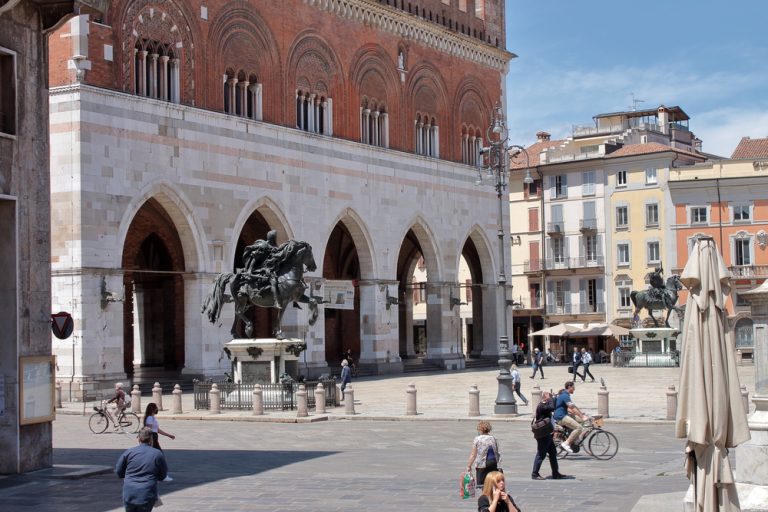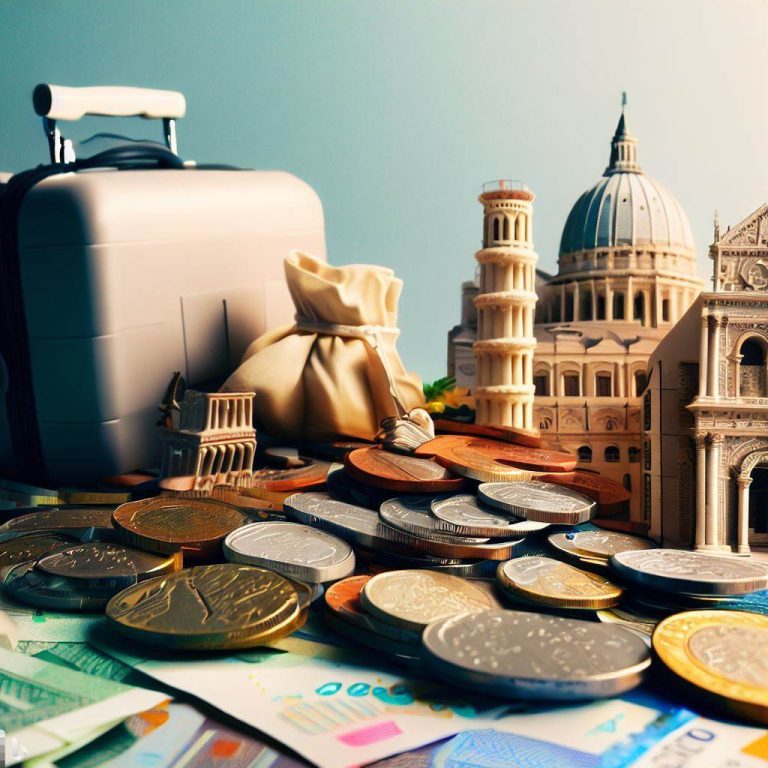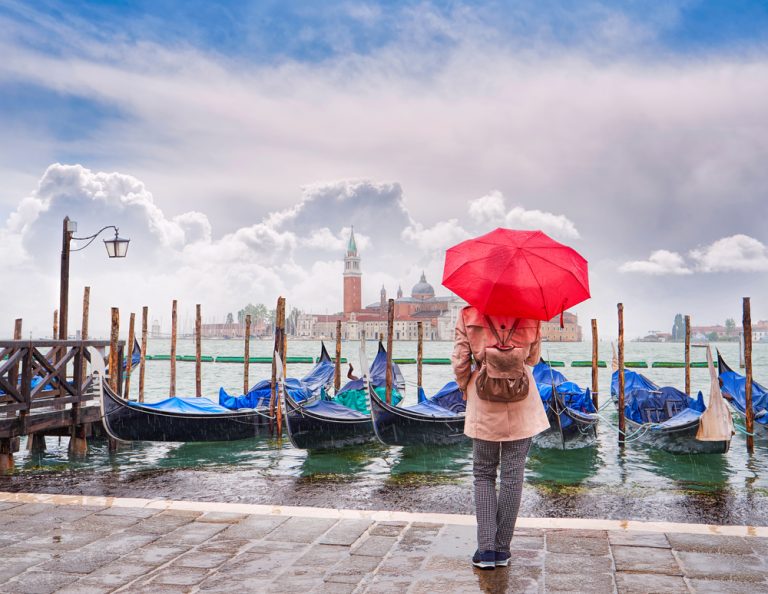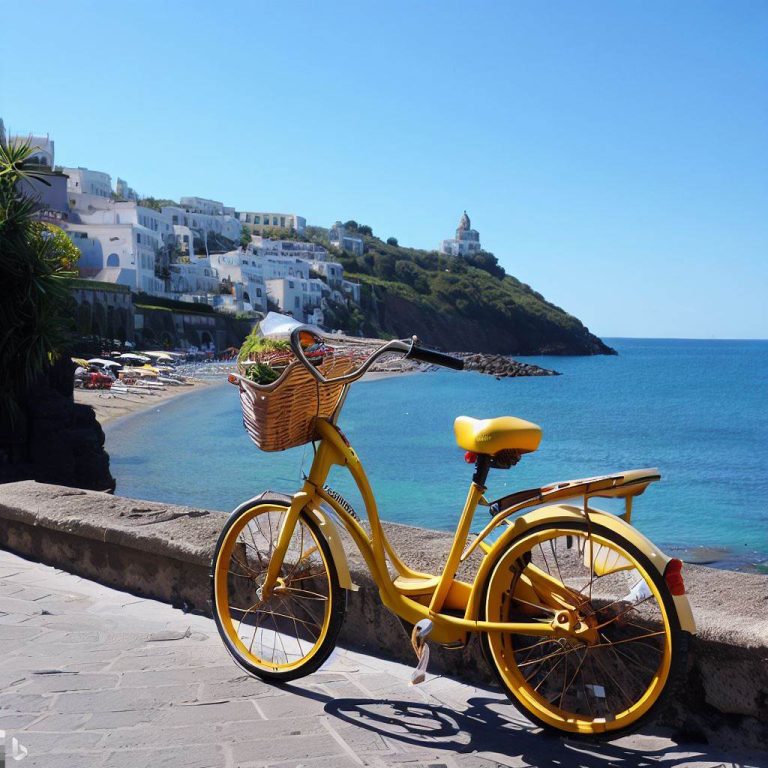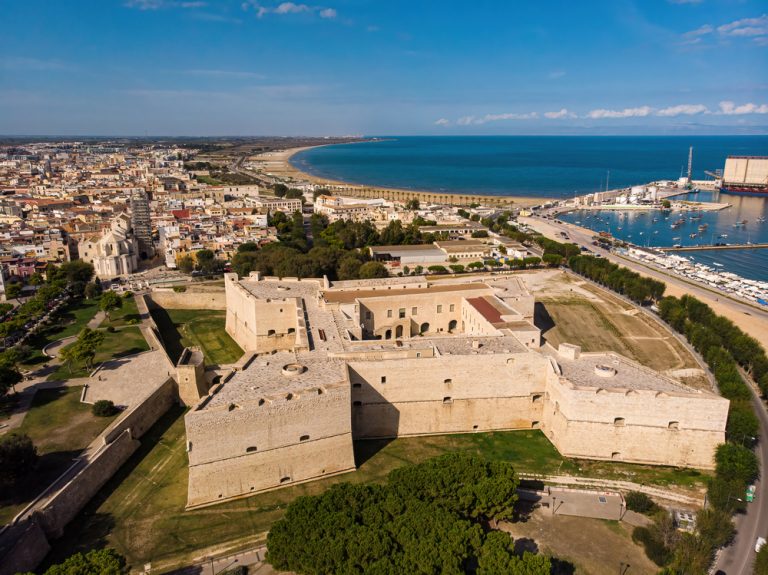Discover Italy Like a Local: Your Ultimate Public Transportation Guide
Discover Italy like a local! Our comprehensive guide explores Italy’s robust public transportation system, providing tourists with practical advice on trains, buses, ferries, and more.
Explore Italy effortlessly with our comprehensive guide to its public transport. Navigate the extensive rail network, hop on a city bus, or enjoy scenic ferry routes. Plus, get handy tips for a smooth, authentic travel experience!
Why Opt for Public Transport in Italy?
Choosing public transport for your Italian getaway is about convenience, cost-effectiveness, and a genuine local experience.
A. Convenience and Cost: Italy’s public transportation boasts an expansive network that covers not only major cities but also smaller towns. Whether you’re venturing into Rome’s historic center or exploring quaint countryside villages, public transport can take you there efficiently and economically.
B. Local Experience: Beyond practicality, public transportation offers a unique glimpse into everyday Italian life, making your journey more than just sightseeing. It’s about immersing yourself in the local culture, engaging in friendly interactions, and creating travel stories that will last a lifetime.
Let’s delve deeper into how you can navigate Italy’s rich and varied public transport system.
Navigating the Italian Rail Network
One of the most popular and efficient ways to travel across Italy is by train. Let’s get familiar with it.
A. Overview of Italy’s Rail System: Italy’s rail system is renowned for its extensive reach and punctuality. From high-speed connections linking major cities to regional lines reaching quaint towns, trains in Italy cater to various travel needs.
B. Types of Trains: Trains in Italy vary based on speed and services. They include high-speed trains (Frecciarossa, Frecciargento, and Frecciabianca), InterCity (IC), and regional trains (Regionale). High-speed trains are perfect for covering large distances quickly, while regional trains offer a leisurely pace to enjoy the scenic Italian countryside.
C. Key Train Operators: Trenitalia and Italo are the two primary operators. Trenitalia runs the majority of services, including high-speed and regional trains, while Italo focuses on high-speed services between major cities.
D. Popular Tourist Routes:
Let’s delve into the heart of Italy’s rail network by exploring some of the most popular routes that captivate tourists:
- Rome to Florence: This high-speed rail route is perfect for art and history enthusiasts. In less than 1.5 hours, you can travel from Rome’s ancient ruins to the Renaissance art epicenter in Florence. Along the journey, you’ll pass through the enchanting landscapes of Tuscany, a visual treat in itself.
- Milan to Venice: This journey, typically completed in around 2.5 hours, takes you from the bustling fashion capital, Milan, to the romantic waterways of Venice. It’s a direct train ride that offers glimpses of Italy’s varied landscapes, from the rich plains of Lombardy to Veneto’s picturesque lagoons.
- Naples to Pompeii: A must-visit route for any history buff. The regional train, Circumvesuviana, covers this route in about 40 minutes, leading you straight to the ancient Roman city frozen in time. As the train progresses, you’ll witness the stunning vistas of the Bay of Naples and the intimidating presence of Mount Vesuvius.
- The Cinque Terre Express: This regional train service links the five beautiful seaside villages of the Cinque Terre on Italy’s Ligurian Coast. Traveling this route offers breathtaking coastal views and easy access to each of the villages.
- Milan to Lake Como: The route from Milan to Lake Como offers picturesque views of the Lombardy region’s lush landscapes and ends at the stunning lake. The journey takes about an hour, making it an excellent day trip option from Milan.
- Rome to Pompeii: Catch the train from Rome to Naples, then transfer to the Circumvesuviana train, which will take you to the ancient Roman city of Pompeii. This is an incredible opportunity to explore one of the world’s most famous archaeological sites.
- Naples to Salerno (Amalfi Coast): Trains from Naples to Salerno provide an easy route to the Amalfi Coast. Once you reach Salerno, you can use local buses or ferries to explore the breathtaking coastal villages.
- Turin to Cuneo: This scenic train journey takes you through the picturesque landscapes of the Piedmont region, famous for its vineyards and truffle-rich forests.
- Bologna to Florence: This route is a part of the country’s high-speed train network and takes you through the beautiful countryside of the Emilia-Romagna and Tuscany regions. It’s an easy way to travel between two of Italy’s most celebrated food and art cities.
- Cagliari to Sassari in Sardinia: This train journey offers an excellent way to explore the beautiful island of Sardinia, from its capital Cagliari to the historic city of Sassari.
These popular routes showcase Italy’s rich history, stunning landscapes, and remarkable convenience of its rail network, enhancing your sightseeing experience.
E. Purchasing Tickets: Tickets can be purchased online, through mobile apps, or at the station. Prices vary based on the train type and distance. Always remember to validate your ticket before boarding to avoid fines.
With this knowledge at your fingertips, you’re ready to experience Italy’s exceptional rail system. Next, let’s explore the bus services.
Exploring Italy by Bus
Buses in Italy offer an excellent alternative to trains, especially for reaching areas not well-serviced by the rail network. They are also a great option for short-distance travel within cities.
A. Overview of Bus Services: Buses in Italy are categorized as city buses for local transport, intercity buses for travel between cities, and international buses for connections outside Italy. They serve nearly every town, making them indispensable for tourists.
B. Bus Types: City buses are an efficient way to navigate through Italian cities. Intercity buses connect smaller towns and tourist destinations not covered by trains. International buses operate cross-border services.
C. Major Bus Companies: Flixbus, Baltour, and SENA are some of the leading bus companies offering intercity and international services. City buses are typically operated by local transport companies.
D. Tourist-Friendly Bus Routes:
Exploring Italy through its bus routes provides a unique vantage point to appreciate its cultural diversity and architectural grandeur. Let’s dive into some noteworthy routes:
- ATAF Line 7 in Florence: This bus line is a true delight for any tourist visiting Florence. Starting from Santa Maria Novella station, it winds its way to the hilltop town of Fiesole. En route, you’ll be treated to magnificent views of the city, the Duomo, and the rolling Tuscan hills.
- Rome’s Bus 64: Known as the ‘tourist’ bus, line 64 starts from Termini station and goes through many of Rome’s iconic sites. It passes through Piazza Venezia, crosses the Tiber river, and ends near St. Peter’s Square. It’s an economical and scenic alternative to tourist hop-on-hop-off services.
- Bus 110 in Palermo: This open-top tour bus in Palermo, Sicily, offers panoramic views of the city’s historic and cultural attractions, such as the Palermo Cathedral and Teatro Massimo. An audio guide service is available in multiple languages, enriching the sightseeing experience.
- SITA Bus in Amalfi Coast: The SITA bus service runs along the spectacular coastline from Sorrento to Amalfi and onto Salerno, passing through iconic towns such as Positano and Ravello. These buses provide an affordable and scenic way to navigate the winding coastal roads.
- Bus 492 in Rome: This bus offers a longer, more comprehensive route through Rome, covering multiple districts and hitting many of the major attractions including the Colosseum, Roman Forum, Piazza Navona, and Vatican City.
- The Garda Lake Bus: This bus service connects the towns around Lake Garda, offering stunning views of the largest lake in Italy. It’s a convenient way to explore the charming lakeside towns such as Sirmione, Desenzano, and Riva del Garda.
- Bus in Cinque Terre: The Explora bus service connects the five beautiful villages of Cinque Terre, offering a great alternative to the walking trails and trains. The bus routes provide stunning views of the coastline and vineyards.
- CTM Bus in Cagliari, Sardinia: CTM bus lines 5 and 5/11 in Cagliari take you from the city center to Poetto beach, offering beautiful views of the Sardinian coast.
By opting for these tourist-friendly bus routes, you can easily reach the key attractions while immersing yourself in the local ambience.
E. Purchasing Tickets: Tickets can be bought at bus stations, on board (for some city buses), or online. Remember to validate your ticket once on board to avoid fines.
With buses adding to your Italian transportation mix, you’re ready to explore off-the-beaten-track destinations. Next, let’s make some waves and look at Italy’s ferries and water taxis.
Adventures on Italian Waters: Ferries and Water Taxis
If you’re exploring Italy’s coastal cities or island regions, ferries and water taxis offer a unique, scenic mode of transport.
A. The Charm of Traveling by Water in Italy: From the romantic gondolas in Venice to the large ferries cruising to Sicily, Italian waterways offer a distinct, leisurely perspective on the country’s diverse landscapes.
B. Important Ferry Routes: Major routes include connections from Naples to the picturesque islands of Capri, Ischia, and Sicily, or from La Spezia to Cinque Terre. For the adventurous, ferries from mainland Italy to Sardinia provide an exciting voyage across the Mediterranean.
C. Major Ferry Operators: Operators such as Tirrenia, Grimaldi Lines, and Moby offer a variety of services, from fast hydrofoils to larger car ferries.
D. Experiencing Water Taxis in Venice: In Venice, the public water bus system, known as the Vaporetto, is an essential and iconic way to navigate the city’s canals. For a more private, albeit pricier, experience, water taxis can be hired.
E. Guide to Buying Tickets for Sea Travel: Tickets can be purchased at port offices, online, or through travel agencies. Make sure to book in advance, especially in peak tourist season.
Traveling by water gives you an entirely different perspective of Italy’s beautiful coastline and romantic canals. Now let’s look at other modes of public transportation that make Italian cities unique.
Unique Modes of Public Transportation in Italy
Beyond buses, trains, and ferries, Italy offers some unique modes of transport that add a special touch to your travel experience.
A. The Iconic Trams of Milan: The historic trams of Milan, with their wooden seats and vintage feel, are an experience in themselves. Tram 1 is particularly popular among tourists as it passes through several iconic sites, including the La Scala Opera House and Sforza Castle.
B. The Cable Cars of San Francisco? No, the Funiculars of Naples: Naples has a network of funiculars that connect the city center to the hilltop districts, offering a quick ride and stunning views over the Bay of Naples.
C. The Vaporettos of Venice: While we’ve discussed the Vaporettos before, their charm deserves another mention. Nothing quite compares to the experience of gliding through Venice’s picturesque canals on these public water buses.
D. Bike-sharing in Italian Cities: Many Italian cities, including Rome, Florence, and Milan, have embraced bike-sharing schemes. It’s an eco-friendly way to explore, especially in the historic city centers where other transportation is often limited.
These unique transport modes are more than just a way to get around; they offer a genuine flavor of Italy’s local life. Now, let’s conclude by looking at the apps and tools that will make your navigation easier.
Navigating Made Easy: Apps and Tools for Public Transportation in Italy
In the digital age, smartphones are indispensable travel companions. Here are some apps and tools to help you navigate Italy’s public transportation system with ease:
A. Trenitalia App: The official app for Italy’s primary train operator, Trenitalia, allows you to check schedules, buy tickets, and monitor train statuses. A must-have for any rail travel in Italy.
B. Moovit: This user-friendly app provides real-time updates for trains, buses, and trams across many Italian cities. It offers route suggestions, departure times, and even step-by-step directions for walking sections.
C. ATVO Bus App: This is particularly useful for those traveling to and from Venice’s Marco Polo airport. It provides schedules and allows online ticket purchasing for the ATVO bus services.
D. Google Maps: A globally recognized tool that can help you navigate around cities, Google Maps offers comprehensive public transit directions across Italy.
E. Bike-Sharing Apps: If you decide to use bike-sharing services in cities like Rome, Milan, or Florence, download the corresponding apps. Some popular ones include Mobike, Lime, and Jump.
With these digital aids at your fingertips, navigating the intricate web of Italy’s public transport becomes an easy and stress-free task, leaving you to focus on enjoying your Italian adventure to the fullest.
Ticket Validation in Italy: A Crucial Step
One aspect of Italian public transportation that often surprises first-time visitors is the requirement to validate tickets. In Italy, purchasing a ticket for a bus, train, tram, or metro is just the first step. Before starting your journey, you need to validate that ticket.
Validation is a process that marks your ticket with the date and time, beginning the period of validity. This is crucial because many tickets in Italy are not for a specific time or date but are valid for a certain period (for example, 90 minutes or 24 hours) from the time of validation.
A. How to Validate Tickets
The process of validation is relatively straightforward. Here’s how it’s done for different modes of transportation:
- On Buses, Trams, and Metros: Look for a small machine near the doors, usually yellow or orange. Upon boarding, insert the ticket into the slot, and the machine will print the date and time on it.
- At Train Stations: You’ll find similar machines near the platforms. Before boarding the train, insert your ticket into the slot. Again, the machine will stamp the date and time.
B. Why Validation is Important
Failing to validate your ticket, even if it’s just an oversight, can lead to penalties. If you’re caught travelling with an unvalidated ticket, you may be fined by the conductor or ticket inspector. It’s considered the same as traveling without a ticket.
C. Exceptions
Please note that this doesn’t apply to tickets with a specific date and time, such as high-speed train tickets from Trenitalia or Italo. These tickets are automatically validated at the time of purchase and do not need to be stamped.
In conclusion, when using public transportation in Italy, always remember to validate your ticket before starting your journey. It’s a small step that can save you from potential fines and ensure a hassle-free travel experience.
Exploring Italy with Regional and Tourist Tickets
When planning your trip around Italy, it’s worth looking into regional and tourist-specific ticket options. These offer unlimited travel within a certain period, and some even include entrance to various attractions. Here’s a rundown of some ticket types that can enhance your Italian adventure.
A. Regional Tickets
Regional tickets can be a cost-effective solution if you plan to travel extensively within a specific region. They are typically valid for a set number of days and offer unlimited travel on local trains, buses, trams, and in some cases, ferries. Here are a few examples:
- Tuscany Card: This card gives you unlimited travel on Trenitalia’s regional services within Tuscany for one, two, or three days. It’s perfect for exploring cities like Florence, Pisa, and Siena.
- Lombardy Regional Train Pass: This pass provides unlimited travel on Trenord regional trains within Lombardy, ideal for day trips to Lake Como or Bergamo from Milan.
- Campania Artecard: Not just a travel card, the Artecard offers unlimited travel on the Campania region’s public transportation and free or discounted entrance to major attractions in Naples, Pompeii, and other locations.
- Piemonte Card: The Piemonte Card offers discounted or free admission to a wide range of museums, palaces, and exhibitions in the region, and it also offers discounts on some public transportation options.
- Friuli Venezia Giulia Card: This card offers free access or discounted rates to numerous attractions in the region, along with discounts on public transport services, making it a great choice for exploring Trieste, Udine, and the surrounding areas.
- Sardegna Pass: For those venturing to the island of Sardinia, this pass provides discounted rates on numerous attractions and experiences, including museums, archaeological sites, and excursions.
B. City Transport Tickets
Many Italian cities offer transport tickets designed for tourists. These typically provide unlimited travel within a certain period (24, 48, 72 hours, etc.) on the city’s public transportation system. Some also include free or discounted admission to local attractions. For example:
- Roma Pass: This offers unlimited travel on Rome’s public transport system, free admission to one or two museums or archaeological sites, and discounts on others.
- Florence City Pass: Along with unlimited travel on ATAF buses and trams, this pass includes skip-the-line access to major attractions such as the Uffizi Gallery and the Accademia Gallery.
- Milan Card: This offers unlimited public transportation within Milan and discounts on various tours, restaurants, and shops.
- Venice Transport Pass: The Venezia Unica City Pass offers unlimited use of the city’s vaporettos (water buses) and buses, with durations ranging from 24 hours to seven days. There’s also an option to include entry to various museums and churches.
- Turin Torino+Piemonte Card: This offers free admission to the most important museums and exhibitions in Turin, as well as some attractions in the surrounding Piedmont region. It also includes free travel on public transport within Turin.
- Bologna Welcome Card: The Welcome Card provides free admission or discounts to Bologna’s main museums and attractions, as well as unlimited use of the city’s public transportation.
- Napoli Unico Campania: This card allows unlimited travel on the public transportation networks in and around Naples, including buses, trams, metro lines, and regional trains.
Remember, these passes should be validated at the start of your first journey.
Before purchasing any travel card, it’s a good idea to plan your itinerary and calculate whether the cost of the card will be less than buying individual tickets for your planned journeys and visits. By choosing the right ticket for your travel needs, you can save both money and time, making your Italian getaway more enjoyable.
Helpful Italian Phrases for Navigating Public Transportation
Communicating in a foreign language can be challenging, especially while traveling. Here are some useful Italian phrases and their English translations that can help you while using public transportation in Italy:
- Dov’è la stazione? – Where is the station?
- Quando arriva l’autobus/treno/traghetto? – When does the bus/train/ferry arrive?
- Dove posso comprare i biglietti? – Where can I buy tickets?
- Quanto costa il biglietto per…? – How much is the ticket to…?
- Mi può mostrare sulla mappa? – Can you show me on the map?
- Mi sono perso/a. Può aiutarmi? – I’m lost. Can you help me?
- Dov’è la fermata dell’autobus più vicina? – Where is the nearest bus stop?
- Quale treno dovrei prendere per…? – Which train should I take for…?
- A che ora parte l’ultimo treno/autobus/traghetto? – What time does the last train/bus/ferry leave?
- Devo cambiare treno/autobus/traghetto? – Do I have to change train/bus/ferry?
- Quanto tempo ci vuole per arrivare a…? – How long does it take to get to…?
- Questa è la mia fermata? – Is this my stop?
- Quale autobus va a…? – Which bus goes to…?
- A che ora è il prossimo treno/autobus/traghetto per…? – What time is the next train/bus/ferry to…?
- Questo treno/autobus va a…? – Does this train/bus go to…?
- Dove posso trovare un taxi? – Where can I find a taxi?
- Potrebbe dirmi quando dobbiamo scendere? – Could you tell me when we should get off?
- Posso pagare con carta di credito? – Can I pay with a credit card?
- Dove posso noleggiare una bicicletta? – Where can I rent a bicycle?
- Mi potrebbe aiutare a comprare il biglietto dalla macchinetta? – Could you help me buy the ticket from the machine?
These phrases should equip you with the basic language tools to navigate Italy’s public transport system with more confidence. Don’t worry about getting every word perfect; Italians generally appreciate any effort to speak their language.
Useful Contacts and Websites for Foreign Travelers in Italy
Keeping a list of essential contacts and useful websites at your fingertips can ensure a smooth and trouble-free travel experience in Italy. Here are some resources you might find helpful:
A. Emergency Services
In case of an emergency, here are the numbers you can dial:
- General Emergencies: 112
- Police: 113
- Fire Brigade: 115
- Medical Emergencies: 118
B. Public Transportation
These websites provide information about schedules, fares, and routes:
- Trenitalia (National Railways): www.trenitalia.com
- Italo (High-speed trains): www.italotreno.it
- ATAC (Rome’s public transport): www.atac.roma.it
- ATAF (Florence’s public transport): www.ataf.net
- ATM (Milan’s public transport): www.atm.it
- ANM (Naples’ public transport): www.anm.it
C. Tourist Information
Here are some official tourism websites for popular regions and cities:
- Italian National Tourist Board: www.italia.it
- Rome: www.turismoroma.it
- Florence: www.firenzeturismo.it
- Venice: www.veneziaunica.it
- Milan: www.turismo.milano.it
- Naples: www.inaples.it
D. Other Useful Contacts
- Roadside Assistance (ACI): 116
- Lost or Stolen Credit Cards (International Toll-Free): MasterCard: 800 870 866, Visa: 800 819 014
Remember, it’s always a good idea to keep these numbers and URLs in an easily accessible place. Safe travels!
Conclusion
Traveling through Italy using public transportation allows you to engage with the country’s culture, its people, and its landscapes in a unique way. Whether by train, bus, ferry, or one of the many unique modes of transport, each journey provides a window into the authentic Italian way of life. So, embrace the local way of travel and create your own unforgettable Italian story. Buon viaggio! (Have a great trip!)


